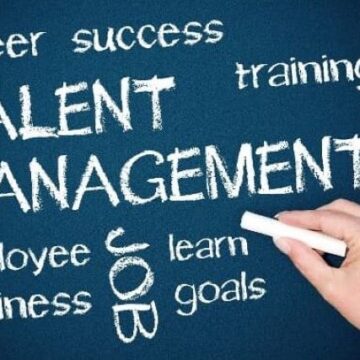
In the dynamic world of HR Management, one term you’ll repeatedly come across is “employee development”. This concept is integral to a company’s growth strategy, shaping not just the individual career paths of employees, but also the overall success of the organization.
In this article, we will delve into the ins and outs of employee development, explore its importance, and discuss strategies for effective implementation. The goal is to offer you a comprehensive understanding of how this key aspect of HR management can make a significant difference in your organization’s future.
Related articles:
5 Tips to Promote the Professional Growth of Your Employees
How to Create your Own Skills Inventory Using No-Code Tools
What is Employee Development?
Employee development is the systematic process of training, education, and professional growth that enhances an employee’s skills, knowledge, and abilities. It’s an intentional, continuous, and strategic business approach designed to boost an organization’s efficiency and productivity.
The scope of employee development expands beyond the immediate job role, focusing also on long-term career growth and personal development of the employee. This strategic investment by the organization not only motivates employees but also equips them with the competencies required to adapt to changing business environments.
Frequently Asked Questions about Employee Development
What is the difference between employee development and employee training?
While both employee development and employee training are centered around enhancing an employee’s capabilities, they differ significantly in scope and approach. Employee training is typically a short-term, job-specific process aimed at improving an employee’s performance in their current role. It focuses on the acquisition of particular skills or knowledge necessary for the job.
On the other hand, employee development is a more extensive, long-term process. It goes beyond the immediate job skills and aims to prepare the employee for future roles and responsibilities within the organization. Employee development encompasses personal growth, leadership skills, and other broader competencies that contribute to an employee’s overall career progression.
Why is developing employees important for an organization’s success?
Employee development is critical for an organization’s success because it directly influences employee productivity, engagement, and retention. By equipping employees with the skills and knowledge they need to excel, it improves the quality of their work and their efficiency.
Furthermore, it increases employee engagement by creating a sense of value and appreciation, as employees see that the organization is committed to their personal growth and career development. This not only boosts morale, but also encourages loyalty, reducing turnover rates. Over time, this leads to a more competent, motivated, and stable workforce, driving overall organizational success.
Organizational development also plays a critical role in employee development by creating structured programs and initiatives that enhance their skills and career growth within the company.
Who is responsible for employee development within an organization?
The responsibility for employee development within an organization typically falls on several key parties. Primarily, HR departments or professional development teams oversee the planning and execution of development programs. However, line managers also play a critical role, often being tasked with identifying individual training needs and supporting their teams through the development process.
Additionally, the employees themselves have an active role in their personal growth, by seeking out development opportunities and being proactive in their learning. In some cases, third-party training providers may also be involved. It’s important to note that a successful employee development strategy requires a concerted effort from all these players.
How can an organization measure the effectiveness of its development programs?
The effectiveness of an organization’s employee development program can be measured using a range of quantitative and qualitative methods. Quantitative metrics include the number of training hours per employee, costs of the program, and attrition rates. Other important indicators could be the improvement in employee performance post-development, which can be traced through performance reviews or productivity data.
On the qualitative side, surveys and feedback from employees can provide insights into their perceptions of the program’s relevance and usefulness. Additionally, the application of new skills on the job and the success of promotions or role changes can be indicative of the program’s effectiveness.
Finally, measuring the return on investment (ROI) by comparing the program’s cost against its benefits can provide a clear picture of its overall success.
What are some common challenges in implementing an employee development program?
- Resource Constraints: One of the major challenges is the limitation of resources, both in terms of time and finances. Investing in employee development requires a significant outlay for training materials, trainers, and potentially even dedicated spaces for training to take place. This can be a particular challenge for small businesses or startups with tight budgets.
- Employee Engagement: Keeping employees engaged and motivated to participate in development programs can be challenging. If employees feel that the content is not relevant to their roles or that they don’t have enough time to dedicate to learning new skills, they may not fully commit to the program.
- Measuring Effectiveness: As mentioned earlier, gauging the success of development programs can be tricky. It often involves a combination of both qualitative and quantitative metrics and the data may not always provide a clear cut answer.
- Tailoring Programs to Individual Needs: Every employee has different learning styles and professional development goals. Designing a program that caters to these differing needs can be a daunting task.
- Maintaining Relevance: The rapidly changing business landscape requires that skills and knowledge are constantly updated. Keeping the development programs current and relevant can be a considerable challenge.
How can an organization foster a culture that encourages employee development?
An organization can foster a culture that encourages employee development by emphasizing learning and growth as core values. This can be achieved through clear communication from leadership about the importance of professional development, and by providing employees with opportunities to learn and grow. Organizations can also encourage a culture of continuous learning by incorporating development goals into performance metrics and rewarding employees who demonstrate a commitment to learning and development.
Additionally, providing various learning resources and opportunities, such as mentorship programs, in-house training, and educational subsidies, sends a clear signal to employees that their development is a priority for the organization. Lastly, creating a safe environment where employees feel comfortable asking questions, seeking help, and taking risks in the pursuit of learning and improvement can further encourage a culture of development.
What role does leadership play in developing employees?
Leadership plays a pivotal role in employee development. Effective leaders act as role models, inspiring their teams to strive for continuous improvement and professional growth. They create a supportive environment that encourages learning, curiosity, and risk-taking.
Moreover, leaders have the authority to implement development programs, allocate resources towards training, and incorporate learning objectives into performance metrics. They can also provide valuable mentorship, sharing their knowledge and experience with less experienced team members.
In short, the extent of commitment and support a leader shows for employee development often directly influences how engaged employees are in their own skill enhancement and career progression.
Can smaller organizations afford to implement employee development programs?
Yes, smaller organizations can definitely afford to implement employee development programs. While they may not have the same resources as larger companies, there are cost-effective and practical approaches available.
These may include cross-training, mentoring programs, online courses, and encouraging self-directed learning. The key lies in recognizing that investing in employee development can lead to greater productivity, higher employee satisfaction, and reduced turnover, thus contributing positively to the organization’s bottom line in the long run.
What are some examples of successful employee development strategies?
- Continuous Learning Programs: Many organizations encourage continuous learning by providing access to online courses or sponsoring industry-related certifications. These programs allow employees to stay updated with the latest trends and best practices in their fields, enhancing their skill sets and making them more valuable to the organization. For those considering a career upgrade in real estate, acquiring a real estate license in NY is a strategic step forward. Just as continuous learning supports various professional careers, obtaining the proper license unlocks multiple opportunities within the real estate industry. The process of learning and certification not only prepares aspiring agents for current roles but also positions them for advanced growth opportunities in the field.
- Mentorship Programs: Pairing less experienced employees with senior members of the team can provide a platform for knowledge transfer, skill enhancement, and professional growth. Mentors can share insights from their experiences, guide their mentees in navigating workplace challenges, and offer constructive feedback to help them improve.
- Job Rotation: This strategy involves moving employees across different roles within the organization. It provides employees with the opportunity to understand different aspects of the business, acquire varied skills, and discover new areas of interest. Job rotation can also improve collaboration and empathy among different teams, as employees get to experience the challenges faced by their colleagues in different roles.
- Performance-based Learning Objectives: Incorporating learning objectives into performance evaluations can promote a culture of continuous learning. Employees can set personal development goals, and their progress can be reviewed during performance evaluations. This approach not only encourages skill development but also links it directly to career progression within the organization.
How does employee development contribute to employee retention and satisfaction?
Employee development is a key driver of employee retention and satisfaction. When companies invest in their employees’ growth and development, it demonstrates that they value their employees and are committed to their long-term success within the organization.
Such initiatives make employees feel appreciated, leading to higher job satisfaction. Moreover, when employees acquire new skills and competencies, it not only boosts their self-confidence but also equips them to take on new challenges and responsibilities, thereby fostering a sense of professional growth and accomplishment.
Additionally, development opportunities often lead to career advancement, further incentivizing employees to stay with the company. Therefore, employee development significantly contributes to both employee retention and satisfaction.




 (1)-666x380.jpg)